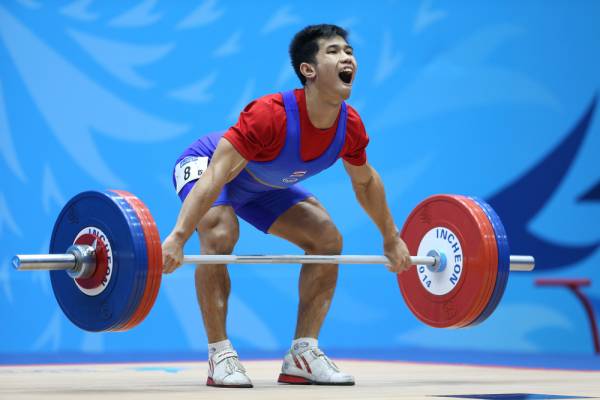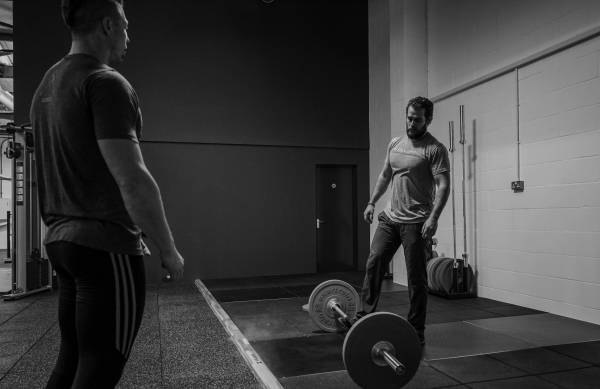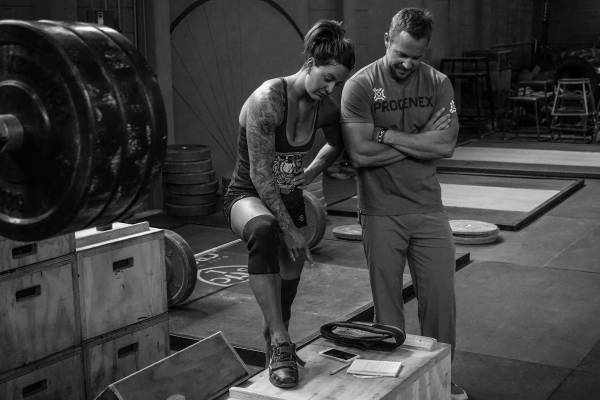I am hopeful that in an advanced modern era of fitness that the majority of us might recognize a “one-size-fits-all” program only works for the beginner. Unfortunately, right after finishing this article the bulk of us will immediately search for “such and such squat program” or to find a “Russian” weightlifting calculator. Some will even unapologetically just follow workouts of a popular CrossFit athlete’s Instagram page.
These people will head to the gym and check their Google docs to know exactly what routine to do and at what weight, though it is essentially an algorithm doing the dictating. It will dawn on few that they are being trained by a fucking math equation. These same people will complain of a particular “main site” and the myriad followers who blindly follow random training protocols.
The level of hypocrisy is thick, but it won’t stop the self-proclaimed elite from arguing which is the best of these types of sites. Names will all be tossed around and either glorified as “magic” or demonized as the impetus of overtraining or injuries. Some coaches without the resolution or knowledge will employ these same programs on their clients compounding a world of sheep teaching sheep.
The problem with all of this is not the sites or the programs. They are essentially good progressions and generally well thought out. They are created by some of the most intelligent coaches alive – and designed for someone other than you.
“Perhaps seeing numbers advance on a page feels better than being told you aren’t ready to add weight.”
Used improperly, as an exact diagram, followed without question, these programs become our current at-home fitness videos, a degree or two off of P90x and Turbo Jam.
The trouble then is with you.
You are unwilling to seek out real coaching. Yes, it is simpler to copy and paste. Excel is easier to develop than a relationship. Perhaps seeing numbers advance on a page feels better than being told you aren’t ready to add weight. But the line of progression dictated by a spreadsheet looks more and more horizontal, and your future as an athlete much more bleak.
The History of Sports Performance
Closer to the beginning of the previous century, there was an arms race in sports performance. A country’s reputation was based on gold medals, and these minor victories could have implications in real warfare. So began the politicians’ call to the scientists to help them in sport, to find the most efficient way to train so we might do it faster and better, and produce more top-end athletes.
The training diaries of thousands of the world’s best were mined, and the data collected and interpreted. The result is an impressive collection of history, of what happened and by whom. The charts, graphs, and spreadsheets we have today that outline optimal rep/set configurations were part of this discovery.

If you have ever performed 3×10 @ 60% 1RM, commonly found in fitness periodicals, then you have used what was revealed as the stimulus for hypertrophy. Without the use of muscle biopsies or even the direct knowledge of how sarcoplasm works, scientists were able to pin down with relative accuracy what stimulus led to what result.
This knowledge has now been in use for the better half of a century. Science, to this day, has only but shed light on these first discoveries and has so far found them incorrect in very few circumstances.
The Problem With Numbers
These researchers reverse engineered the training process, but in doing so lost one of the most essential parts. They deemphasized the training and looked to the numbers as the primary cause for stimulus. We are inundated with percentages and rep schemes. 70% means more to us than technical proficiency.
A track record of what happened does not tell us how it happened. For instance, the Smolov squat program as we know it may in fact be what happened for one person, but to see what Sergey modified on the day or adapted to address specific problems with the movement is lost. The coaching aspect of progression is voided when we simply follow a training spreadsheet.
“The coaching aspect of progression is voided when we simply follow a training spreadsheet.”
Let’s be honest – few of us are limited by just strength or a lack of linear progression. In most cases, we have a localized and specific weakness or imbalance that cause deviation in our movement. Grip strength or poor hip extension might limit one person in finishing a deadlift. A weak or hyper-mobile mid-back might make another unable to break that bar off the floor. For each of these problems, there are fixes. But they are individual and have nothing to do with arithmetic.
The sport of weightlifting illuminates this perfectly as a progressively overloaded program will help few people reach new levels of ability without consideration to individual limitations. Instead, such a program usually reinforces problems by compounding the amount of reps a trainee does incorrectly.
Individualized Training
Not everyone needs a specialized program, especially if it changes the fun training can add to your day. If you have never trained before, following the CrossFit main site could make you stronger. If you are new enough to training, the Smolov squat program might actually improve your marathon time (although I wouldn’t recommend it). The closer you are to the couch, the more options you have that will result in improvement. But the higher the level of fitness we require, the more appropriate and specific the numbers and protocol must become.

Training “Superman” Henry Cavill
Numbers are useful and eventually are what we are aiming to improve, but our reliance and focus on them has overshadowed the most valuable tool in developing athletes – a relationship with a trusted mentor. This does not mean generalized, pre-written, or even one-size-fits-all programs are worthless. It means how the majority of practitioners who use them is.
I view examples of others programs as learning tools, examples of a coach’s style. But nothing will replace the progression an athlete or trainee can make by having a real coach oversee a scientifically devised plan. We know this because despite all the science and advances the Russians (or others involved in the Soviet system) are responsible for in regards to sport, they still have a coach in all the training halls for developing athletes – watching, taking notes, giving advice.
“Nothing will replace the progression an athlete or trainee can make by having a real coach oversee a scientifically devised plan.”
The Chinese, with a seemingly endless supply of technology, utilize experience and a watchful eye as their cornerstone of practice. The Bulgarian system, for all of its controversy in weightlifting, was not advanced because of their “magical” theory of frequency or the supposed doping program. No, they had one of the best coaches in the world, Ivan Abadjiev, who not only devised the program but also implemented it perfectly, pulling athletes when he noticed problems or forcing advances when he saw potential. Once all this is realized, then finding a proper mentor is not even up for debate.
Find a Good Coach
The most important aspect, when following a generalized program would be to include a deep evaluation of ourselves with the help of outside eyes or a knowledgeable coach. Then the easy access to “examples” of programming would be an addition to your knowledge base.

You might start to recognize patterns where certain coaches are able to fix specific problems. You must also know whom the program was written for, why, and his or her training history. If a program lacks these details in its explanation, then following that program is a bad idea. With this approach, programming makes sense and it is a teaching tool, not an unguided list of instructions.
There are infinite possibilities to achieving one goal, but we have to be careful not to confuse infinite with guaranteed, as there are also infinite ways to fail. Arming yourself with knowledge and examples of how others correct problems will separate you from the crowds looking for an easy answer to “How should I train?”
“Implement the useful bits that will add to your ability or even just your experience, and ditch the rest.”
The next time you are flipping through squat routines, copying exercises from Hookgrip videos, or even looking at what some arbitrary CrossFit champion is doing, try to look at the process and how it applies to you. Recognize the style as just that, and not a magical solution based on math. Implement the useful bits that will add to your ability or even just your experience, and ditch the rest.
If you aren’t improving after jumping from program to program, realize it is not because you are special. It is because you are most likely missing the single most important factor in athletic development – an objective guide.
Check out these related articles:
- Overcoming Self-Imposed Limitations
- 4 Reasons You’re Not Getting Stronger
- The Strength Training Secrets of the Russians
- What’s New On Breaking Muscle Today
Photos 1,3, and 4 courtesy of Michael Blevins.
Photo 2 courtesy of Shutterstock.






